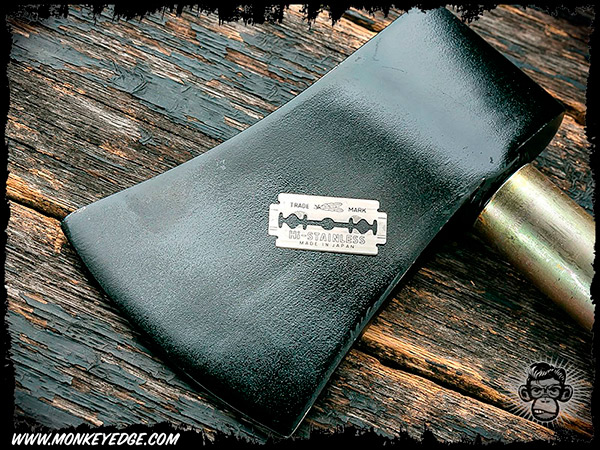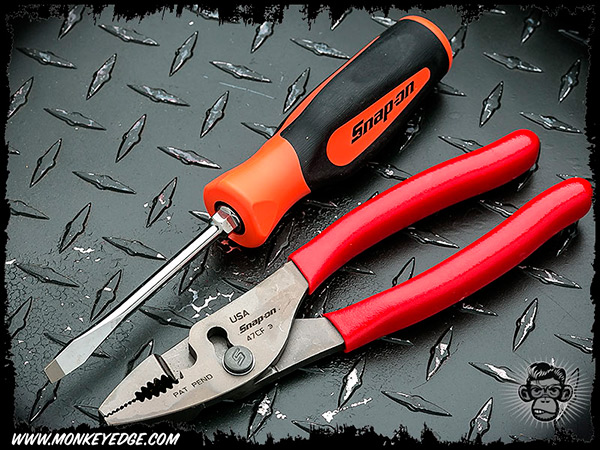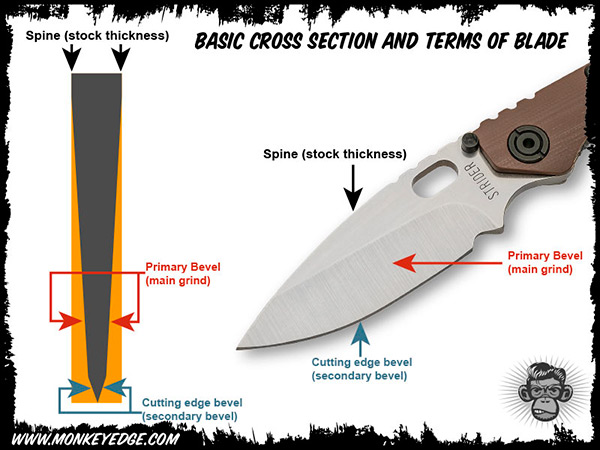Disclaimer: I am not a knife maker, did not even stay at a Holiday Inn Express, and truth be told, I’m not even that bright.
This is not meant to be a master’s thesis (people spend their whole lives dedicated to learning the intricacies of blade geometry). This is meant as a “101 level” look to answer some of the questions we get here at Monkey Edge.
Why is my knife not as sharp as (insert another knife here)?
I want thicker stock because it is “stronger”. What is “better”: brand x or y? What is “better”: a tanto or spearpoint?
We get questions like these every single day. As with many things in life, the answers are not so simple. Also, just like things in life, the answers are really a series of trade offs.
For example: when evaluating body armor for troops if you have the ultimate in protection, you are sacrificing troop mobility and stamina due to the increased load. When customers call and ask questions, the first thing we do is ask one back: “what do you need the knife to do?”
People often compare one knife to another that have totally different design goals and try to determine which one is “better”. A knife is no different than any other tool. You select one based off the needs of the job. The “best” phillips head screwdriver does no good if what you need is a flat head.
The mission drives the gear train.
It’s important to have a basic understanding of how a blade is made and some basic terms.
A maker takes a sheet of steel in a given thickness, and cuts the shape of the blade (like a cookie cutter). That blade blank is then given a primary or main bevel. This primary bevel (or grind) is the part that you immediately see when looking at the knife. This is then beveled again for the cutting edge or secondary bevel. When people talk about blade stock thickness, they are generally referring to the spine or top portion of the blade at its thickest point. The relationship of these angles: from cutting edge angle, primary bevel angle, and the overall stock thickness determines the blade geometry. The blade geometry determines the cutting characteristics and the durability.
Disclaimer again – this is a SUPER simplification of the process and not accounting for other factors such as steel type etc.
To put things simply: thinner = sharper and thicker = stronger. However, there are many ways that knife makers adjust these variables. The “art” of knifemaking is understanding how each of these elements interacts with each other and how that affects the knife’s performance for its intended task.
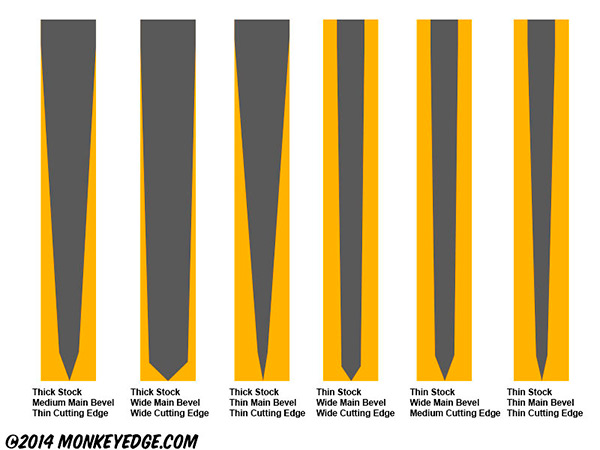
The above drawing is very simplistic, but demonstrates that by varying the elements of blade geometry, the maker can change the attributes of cutting performance and strength.
Think about blades that are considered sharp: razor blades, scalpels, X acto knives, fillet knives, etc. They are all super thin. A knife is nothing but a wedge of metal. When we cut something we are pushing this wedge of steel through material. The thinner that steel wedge is, the “sharper” it is.
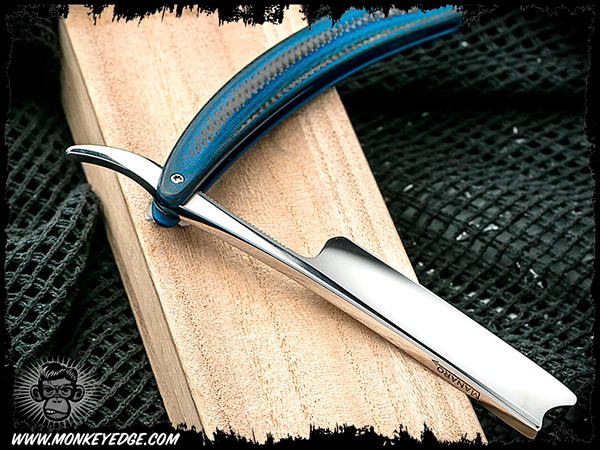
A straight razor is one of those blades that seems to ‘break the rules’. It has a generally thicker overall stock, but of course is ‘razor sharp’. This is because the only part of the razor that is used is the cutting edge. The overall stock is thick to provide rigidity, but the cutting edge is ground extremely thin. Great for scraping your face, but not so great if you had to cut through thick material as the ‘wedge’ is fat at the spine.
OK, thin = sharp and slicey-like. Great. Now go take that branch off a tree with a scalpel. Bummer dude! Now we see why blades that are used for impact cutting (as opposed to slicing) are vastly thicker. Axes, chisels, etc are all thicker. Grinding their cutting edge to a razor thin and sharp angle would do no good. The first whack at something would lead to chipping of the material etc. Just like you would not want your surgeon using a chisel to take out your tonsils, you also would not want to use his scalpel to cut firewood.
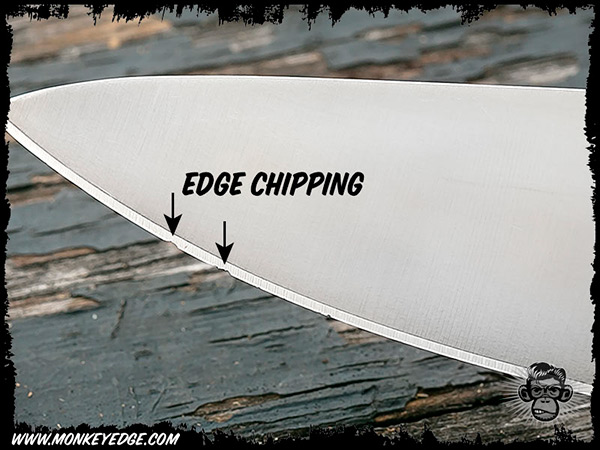
This thinly ground knife is crazy sharp. However, the edge did not like running into those large packing staples when opening a box. The thin cutting edge was easily chipped.
The above two examples are extremes based on very specific tasks. However, our carry knives still follow the same “rules”. What people need to understand is that knife makers often have very different goals in the designs of their knives and to take those goals into account when deciding what to purchase. Was the knife meant as a general use pocket knife to slice apples, open mail, etc… OR what is designed to be a stout beast to take to the field (or warzone) and abused with very little maintenance?
I often say that a Cadillac Escalade and a military HUMVEE are both SUV’s. They also both cost a good chunk of change. Which one is better? Well, if I am going to war or the zombie apocalypse, give me the HUMVEE. Even new HUMVEES delivered to the military have ratty looking paint, poor comfort, and lack of refinement. However, if I am taking my wife out to dinner, or drive across country, the Escalade is a much better choice. The insanity is when people try to apply the same criteria to both vehicles or are not realistic about their needs and then say stuff like the following:
A) Buy the HUMVEE and say “there’s a scratch in my paint” or “it rides loud and rough” and it “is not as ‘good’ as my Escalade”.
OR
B) Buy the Escalade and try to take it through the Baja desert, ferry a 5 foot deep running stream, etc and then complain that “this thing is a piece of crap” and “could not even climb that 35 degree mountain slope” and “it is nowhere near as ‘good’ as my HUMVEE.
Both buyers above would have been better served by taking into account their actual (rather than perceived)use needs and the design goals of the vehicle into account before purchasing. Trying to argue about which one is “better” or trying to turn one into the other will only lead to frustration.
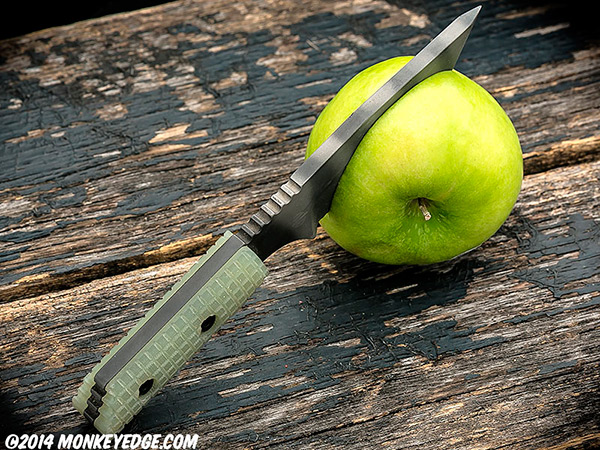
The Strider DB is a beast of a knife, designed as an ‘urban destruction tool’ and is sometimes referred to as a ‘sharpened pry bar’. It is great for prying, smashing, etc. Not so great for general knife stuff like opening your mail or cutting an apple. We have had more than one customer want to return theirs because ‘it isn’t sharp’. It is a 1/4 thick stock knife with wide blade geometry. It will never slice paper (and was not designed to.)
Do you NEED that thicker stock knife? Are you willing to live with the lower amount of relative sharpness?
Do you LIKE to hold up sheets of paper and have the blade just slice right through them? Are you willing to live with the greater potential for damage under hard use?
Knives can be a very personal and emotional choice. However, we have seen people drive themselves (and us) insane by trying to reach some sort of “knife nirvana”. They want the knife they can beat on with a hammer, never rust, slice through a falling feather like a ninja, AND look, feel, and function like a delicate Swiss watch. That knife does not exist (yet anyway). Understand that like anything else in life, it is a series of trade offs.
Besides, that’s why all of us knife guys have multiple knives right?









